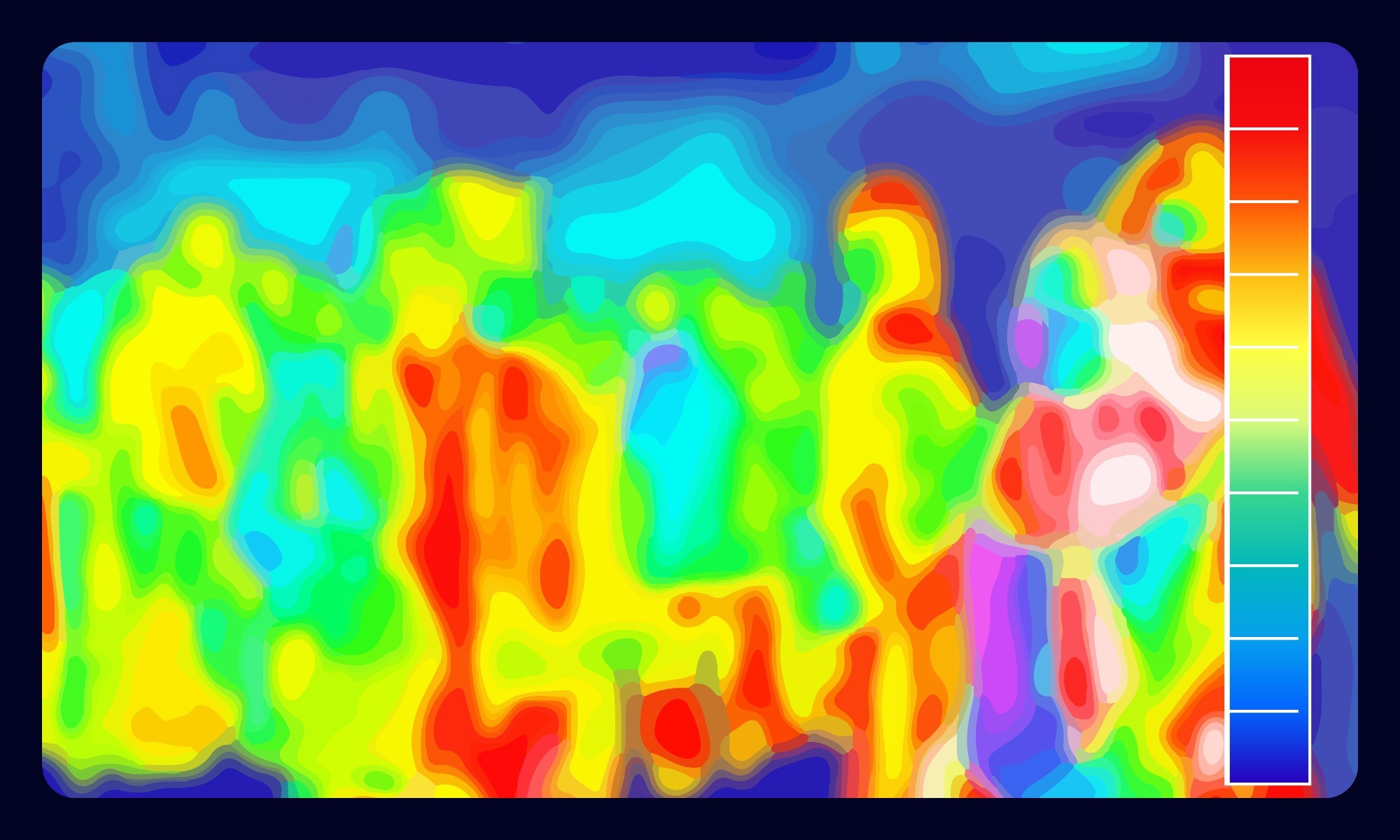Despite advanced technologies like artificial intelligence, quantum computing, and brain-computer interfaces gaining traction, the thermopile detector remains a steadfast choice due to its simplicity and reliability.
This article will go into the inner workings of thermopile detectors, their applications, and why they continue to be a preferred option for precise sensing in modern technology.

Image Credit: cipta studio/Shutterstock.com
Thermopiles 101: Detecting Infrared Radiation
How is infrared (IR) radiation detected? Any object above absolute zero emits IR radiation—an invisible heat signature measured by IR thermopile detectors without direct contact.
These thermal sensors operate on the thermoelectric effect, where two connected semiconductors generate a voltage as heat drives electrons across a temperature gradient. This self-sustaining process converts IR radiation into accurate signals, allowing for the detection of minor temperature variations caused by convection and radiation.1
Moreover, IR thermopile detectors can identify gases by measuring specific IR wavelengths absorbed by gas molecules.
When gas molecules absorb IR light, they vibrate and heat up, with the thermopile converting this slight temperature increase into an electrical signal. Optical filters can isolate the wavelengths unique to different gases, enabling the quantification of concentrations such as CO2, CH4, and CO.2
The Relevance of Thermopile Detectors
Thermopile detectors provide significant advantages that newer technologies often cannot match. They operate passively, requiring no external power for radiation detection, which enhances their efficiency. Their robust design allows them to endure extreme conditions, including 1000 G mechanical shock and 30 G random vibration.
Another notable benefit is their simplicity. The straightforward design leads to increased reliability and lower production costs. Additionally, their versatility makes them suitable for various applications, from non-contact temperature sensing to gas analysis, fire detection, and environmental monitoring.
Dexter Research: Innovating Thermopile Technology
Since 1977, Dexter Research Center has been at the forefront of infrared thermopile detector technology, catering to industries such as research, medical, automotive, aerospace, and security.
Despite being perceived as an older technology, thermopiles remain vital due to their versatility, durability, and cost-effectiveness, finding applications in industrial automation, smart homes, and automotive electronics.1,3
Gas analysis represents a prominent application for thermopile detectors, and Dexter offers a range of products tailored for this purpose:
- Broad Channel Range: Options include single-channel models like the silicon S60M TO-18 and complex multi-channel configurations, such as the thin film 10 Channel, suitable for both basic and advanced gas analysis needs.4
- Wide Output Voltage Spectrum: The 2M and 2M Quad thin film models deliver a high output voltage of 250 μV, ideal for detecting faint IR signals. In contrast, the ST60 Quad, ST60 Dual, and ST60 LCC provide lower output voltages (62 μV) for applications prioritizing rapid response over sensitivity.4
- Signal-to-Noise Ratio (SNR) Optimization: With SNRs of up to 19,531 in the 2M model, Dexter ensures precise gas analysis even in challenging environments.4
- Compensated Models for Stability: Models like the DR34 Compensated minimize thermal drift, support consistent performance in varying temperatures, and are suitable for industrial and medical monitoring, including in infant incubators.5
- Flexibility in Response Times: Time constants vary from a rapid 18 milliseconds in the ST60 models for quick measurements to 85 milliseconds in the 2M for applications requiring stable, long-term monitoring.4
With ongoing advancements such as extended temperature ranges and high-sensitivity options, Dexter continuously refines and enhances thermopile technology, ensuring its ongoing relevance and reliability.4
The ST60 High Temp Detector: Expanding Temperature Measurement Capabilities
Temperature measurement has long been a strength of Dexter’s thermopile technology, exemplified by the upgraded ST60 High Temp Detector. With an operating range reaching up to 300 °C, it is a dependable choice for extreme environments where other sensors may fail.6
The key features of the ST60 High Temp Detector include:
- High Operating Temperature: The extended 300 °C threshold makes the ST60 suitable for demanding industrial applications.
- Small Active Area with High Efficiency: The detector features a .61 mm x .61 mm active area, offering a powerful yet compact sensing solution.
- Optimized Responsivity: With a Temperature Coefficient of Responsivity of -0.04 %/°C, the device maintains accuracy even in fluctuating thermal conditions.
- Durable Construction: Encapsulated in nitrogen, the detector achieves a time constant of 18 milliseconds, balancing response speed and thermal stability.
Designed for critical applications, the ST60 High Temp Detector is suitable for ear thermometers, fire suppression systems, and the aerospace industry. When paired with appropriate filters, it also supports gas analysis, making it a versatile option across various sectors.
Taking the Temperature of Dexter’s Thermopile Detectors
Progress can often be seen as reinvention, but it can also stem from refinement, enhancing what is already effective. By continually pushing the boundaries of thermopile technology, such as extending operating temperatures to 300 °C in the ST60, Dexter leads the field in infrared sensing.
Whether for high-stakes applications in aerospace, critical safety systems in industrial environments, or precision gas analysis, Dexter’s portfolio offers reliable solutions tailored to diverse requirements.
References and Further Reading
- Liang, T., et al. (2021). Design and Fabrication of a Low-Cost Thermopile Infrared Detector. Micromachines, 12(9), p.1134. https://doi.org/10.3390/mi12091134.
- AZoSensors (2018). AZoSensors. (online) AZoSensors. Available at: https://www.azosensors.com/article.aspx?ArticleID=1047 (Accessed 8 May 2025).
- Dexter Research Centre. (2018) The World’s Leader in Infrared Thermopile Detectors. (online) Available at: https://dexterresearch.com/ (Accessed 8 May 2025).
- Dexter Research Centre. (2019). Infrared Gas Detector | Anesthetic Gas Analyzer. (online) Available at: https://dexterresearch.com/product-finder/gas-analysis/ (Accessed 8 May 2025).
- Hochrein, K. (2018). DR34 Compensated | Dexter Research Center. (online) Available at: https://dexterresearch.com/download/dr34-compensated/ (Accessed 8 May 2025).
- Dexter Research Center. (2019). ST60 High Temperature | Dexter Research Center. (online) Available at: https://dexterresearch.com/product-finder/st60-high-temperature/ (Accessed 8 May 2025).

This information has been sourced, reviewed and adapted from materials provided by Dexter Research Center, Inc.
For more information on this source, please visit Dexter Research Center, Inc.